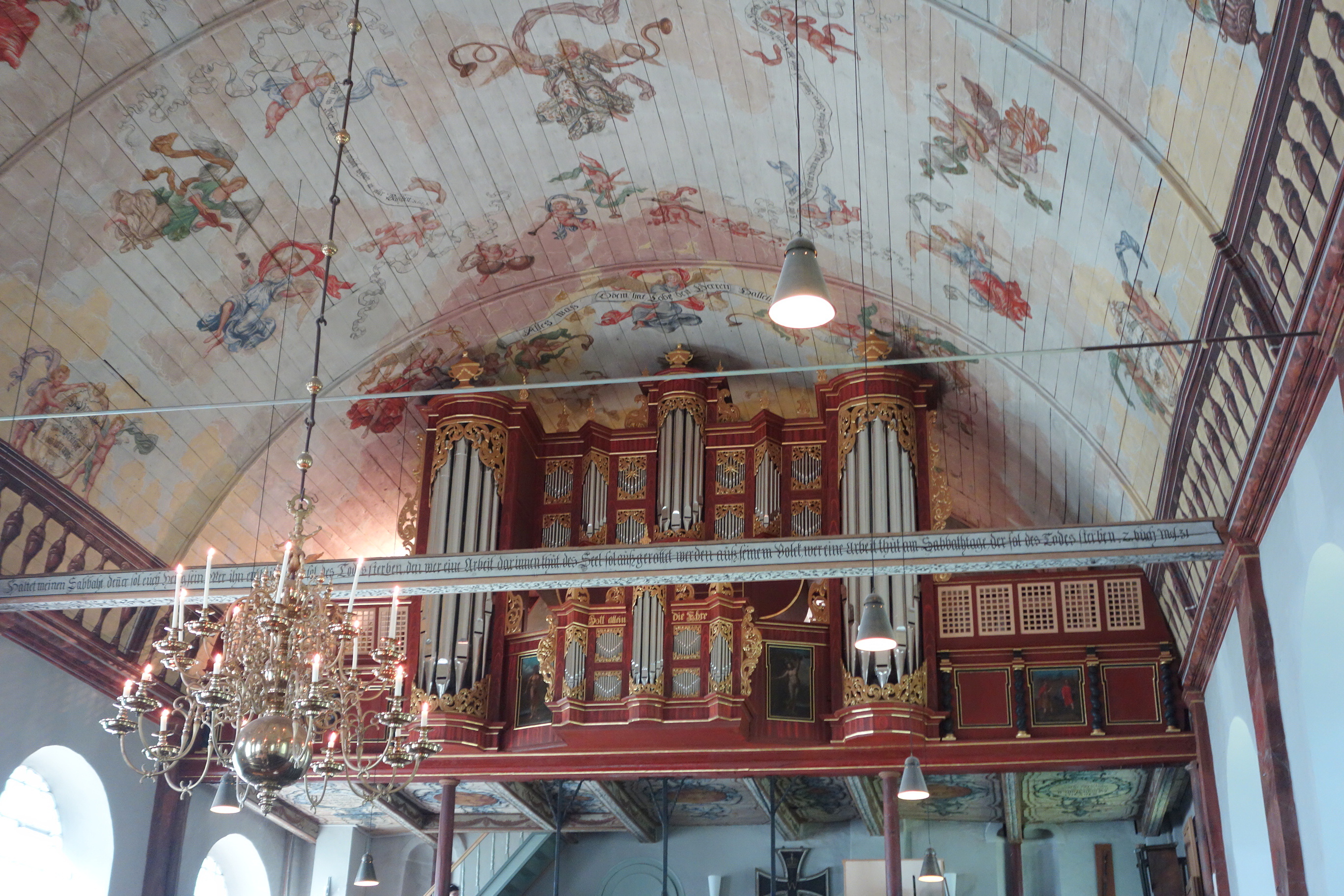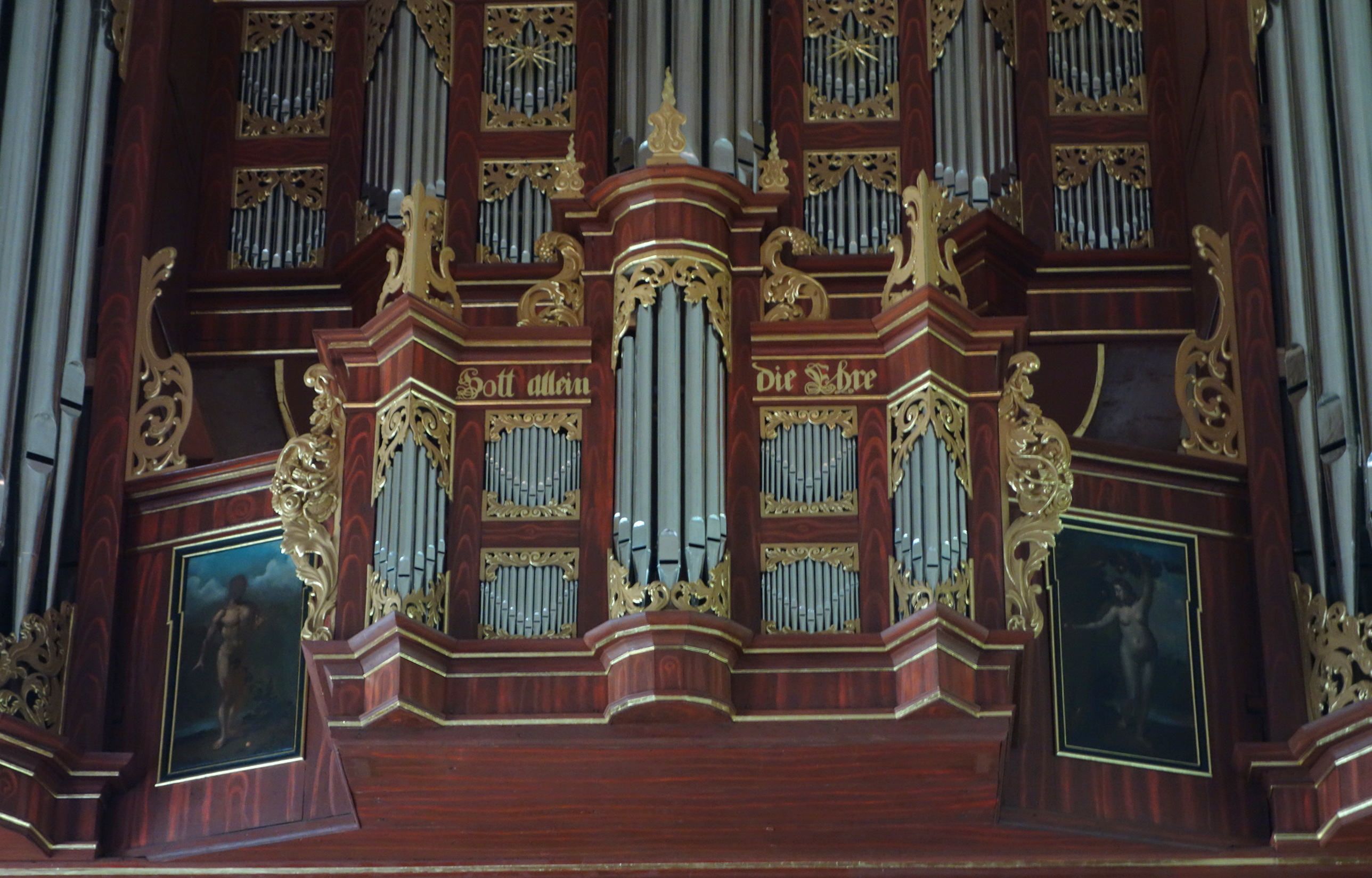Hamburg-Neuenfelde, St. Pankratius
| Builder | A. Schnitger |
|---|---|
| Year | 1688 |
| Period/Style | Baroque |
| Stops | 34 |
| Keyboards | 2+P |
| Keyaction | tracker/mechanical |
| Tuning | 1/5 Comma Meantone at 469 Hz |
The organ at St. Pankratius in Hamburg-Neuenfelde, built by Arp Schnitger in 1688, is his largest two-manual organ, featuring 34 registers, about half of which remain original. Located in Neuenfelde, part of the Altes Land and incorporated into Hamburg in 1937, the instrument exemplifies the Baroque style. The organ has 2068 pipes, 54 pipe rows, and both mechanical key and stop actions.
Schnitger's personal connection to Neuenfelde, where he married and later resided, influenced his work on the organ. The church received the organ in 1688, after Schnitger repurposed an older organ and integrated it into the newly built church. The original Fritzsche organ, deemed inadequate for the new space, led to Schnitger’s commission for a new build. He completed the organ in 21 weeks, placing it on a nearly seven-meter-high west gallery.
The organ has undergone several modifications and restorations. Significant changes were made by Jakob Albrecht in 1750, Georg Wilhelm Wilhelmy in the late 18th and early 19th centuries, and the Röver family in the 19th century. Restorations in the 20th century by various builders, including Paul Ott and Rudolf von Beckerath, aimed to address issues but often introduced inconsistencies. The most recent comprehensive restoration by Wegscheider from 2015 to 2017, driven by organist Hilger Kespohl, adhered to strict conservation principles. This restoration included stabilizing the organ case, reconstructing lost pipes, and implementing a modified meantone temperament. The restored organ was re-inaugurated on June 12, 2017, by Bishop Kirsten Fehrs.
Schnitger's personal connection to Neuenfelde, where he married and later resided, influenced his work on the organ. The church received the organ in 1688, after Schnitger repurposed an older organ and integrated it into the newly built church. The original Fritzsche organ, deemed inadequate for the new space, led to Schnitger’s commission for a new build. He completed the organ in 21 weeks, placing it on a nearly seven-meter-high west gallery.
The organ has undergone several modifications and restorations. Significant changes were made by Jakob Albrecht in 1750, Georg Wilhelm Wilhelmy in the late 18th and early 19th centuries, and the Röver family in the 19th century. Restorations in the 20th century by various builders, including Paul Ott and Rudolf von Beckerath, aimed to address issues but often introduced inconsistencies. The most recent comprehensive restoration by Wegscheider from 2015 to 2017, driven by organist Hilger Kespohl, adhered to strict conservation principles. This restoration included stabilizing the organ case, reconstructing lost pipes, and implementing a modified meantone temperament. The restored organ was re-inaugurated on June 12, 2017, by Bishop Kirsten Fehrs.
| I Rückpositiv | II Oberwerk | Pedal |
|---|---|---|
| Principal 4′ | Principal 8′ | Principal 16′ |
| Gedact 8′ | Quintadena 16′ | Octav 8′ |
| Quintadena 8′ | Rohrfloit 8′ | Octav 4′ |
| Plockfloit 4′ | Octav 4′ | Floit 4′ |
| Quintfloit 3′ | Spitzfloit 4′ | Nachthorn 2′ |
| Octav 2′ | Nasat 3′ | Rauschpfeiff II |
| Siefloit 1 1⁄2′ | Octav 2′ | Mixtur V-VI |
| Sexquialt II | Spielfloit 2′ | Posaun 16′ |
| Tertzian II | Rauschpfeiff II | Trommet 8′ |
| Scharf IV–VI | Mixtur V–VI | Cornet 2′ |
| Trechter Regal 8′ | Cimbel III | |
| Trommet 8′ | ||
| Krummhorn 8′ |
https://de.wikipedia.org/wiki/Orgel_von_St._Pankratius_%28Neuenfelde%29
 Pipe Organ Map
Pipe Organ Map

